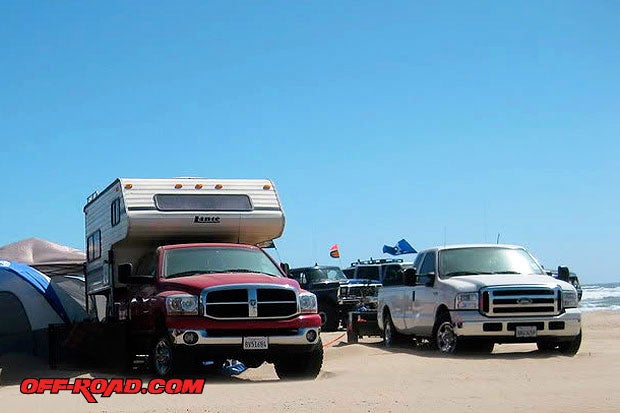
Leveled, mini-packed and still able to tow… you’d better believe it. Our project Dodge Mega Cab was modified to handle off-road conditions, deteriorating highways and most importantly towing—just like a diesel truck should.
We found amazing ride and handling with the KORE Performance suspension and Bilstein shocks upgrade. Now we just needed a little help with hauling heavy loads.
On occasion, we have the need to haul an overhead camper and tow ATVs or a trail rig behind the pick-up truck. It’s during these instances that we are reminded that we don’t have the extra capacity of a 1-ton.
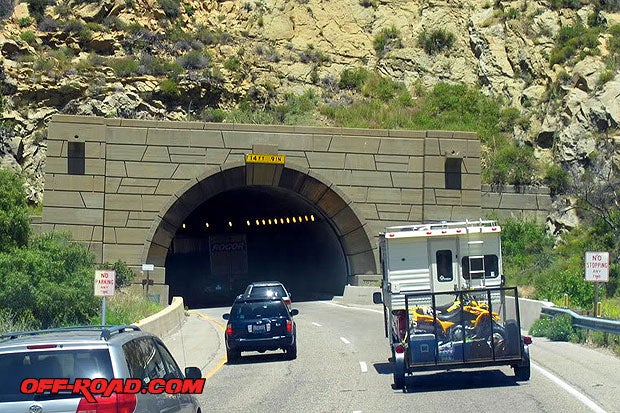
Since we primarily drive the truck unloaded, swapping the suspension for some 1-ton leafs wasn’t really an option. We also aren’t ready to give up our added wheel travel and performance ride from KORE.
Other Dodge Mega Cab Build Stories:
That said, the best solution for our sagging loaded truck was to either get longer bump stops (that would limit travel) or a set of air springs. We went with air springs for their adjustability.
FIRESTONE RIDE-RITE AIR HELPER SPRINGS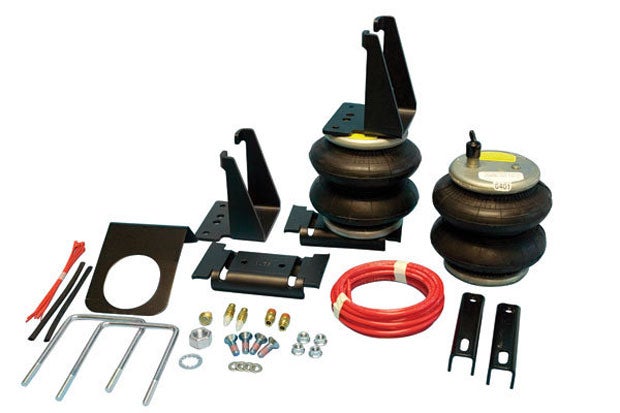
When talking about air springs or air bag suspension, the name Firestone quickly comes up. This is because they are the leading supplier of air springs in the aftermarket.
Air Springs are used by RVs, pick-up trucks, vans and even hot rods. The ride is popular among those looking for a soft ride with adjustment for ride height.
The Firestone air helper springs is a proven, technology-driven piece of equipment that will add stability and safety to any vehicle hauling or towing a heavy load.
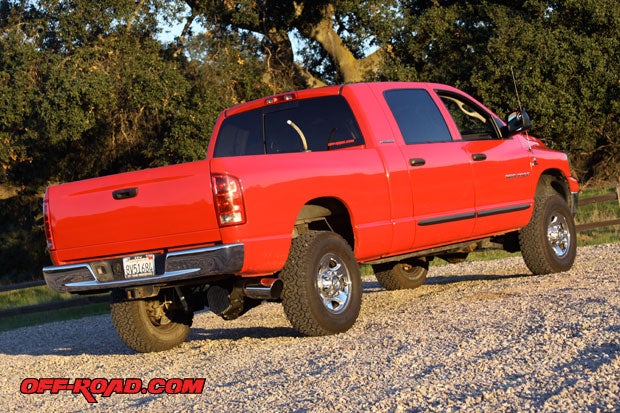
One of the key features that sold us on the KORE Recon Rear suspension was that it significantly improves the handling of the truck on and off-road and kept its towing capability. It also will work well with Firestone air helper springs. According to KORE Performance, the added wheel travel is still within spec of the bags. They just recommend using a low PSI.
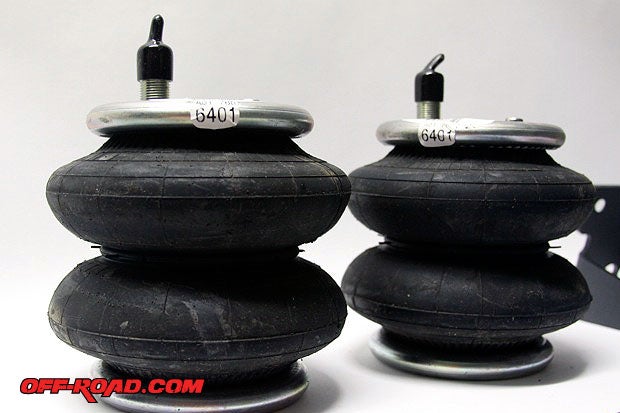
The Ride-Rite helper air springs can be inflated on their own, but we really liked the Firestone Air-Rite system that allows the driver to do it all from the confines of the cab. The Firestone Air-Rite on-board compressor and monitoring controller system is designed to work with the Firestone Ride-Rite system.
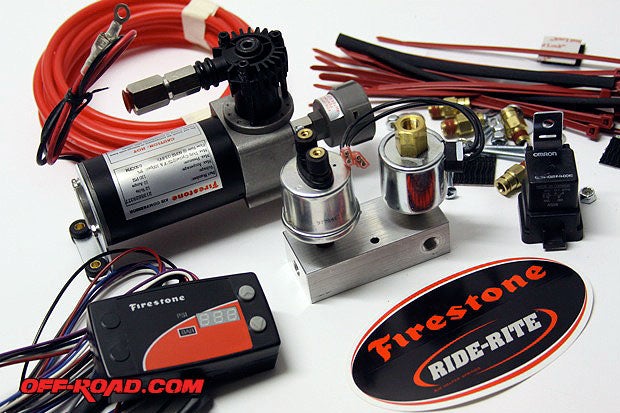
INSTALLATION
Both the Firestone Ride-Rite and Air-Rite kits used on our Dodge Ram are bolt on kits. The installation can be done with simple tools found in most toolboxes. After reading the detailed instructions from Firestone Industrial, we felt confident to take on the installation in our very own garage.
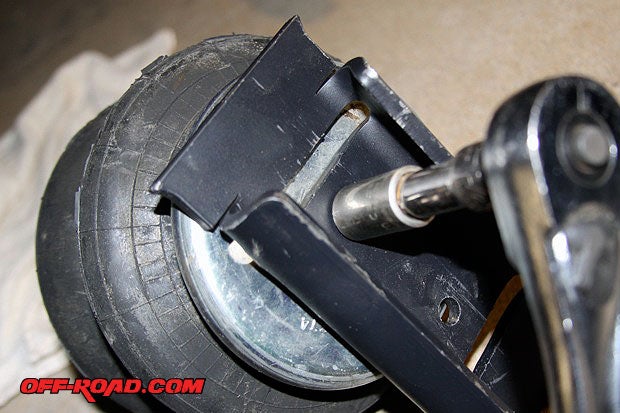
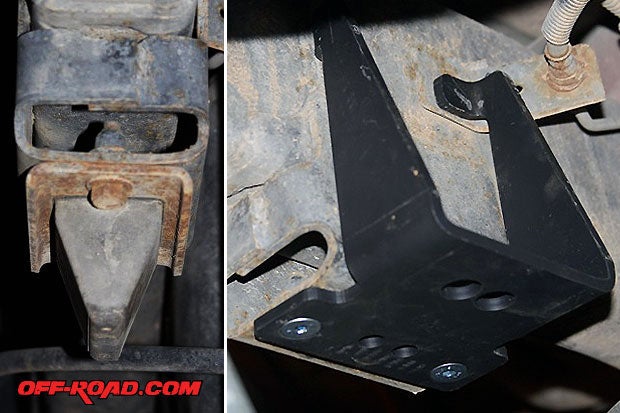
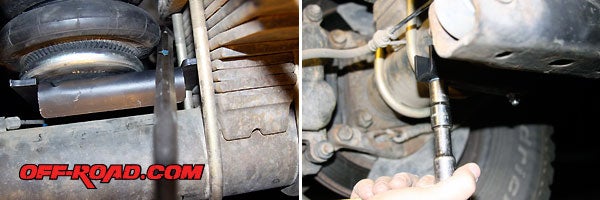
Included with our air accessory kit was a bracket to install the air compressor along the frame rail. It works great on most trucks, but since our Dodge Mega Cab does hit the trails, the mounting location was a little vulnerable being that close to the ground. Our truck gets dirty—so rocks, mud, snow, water and dirt are inevitable.
We racked our brains trying to come up with a solution on where to place the compressor. It needed to be high enough to keep dry, close enough to the battery for performance, and yet be sturdy enough to keep up with our traveling Dodge.
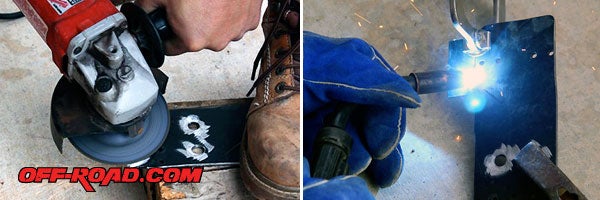
We finally had it, on the Cummings 5.9l diesel there is an open bracket in front of the intake pipe. We test fitted the compressor and there was plenty of room. We ended up modifying the bracket that came with our kit so it would bolt onto our engine.
We are really happy with the way it turned out. The air compressor location looks really trick.
The sturdy ¼-inch steel plate bracket mounted on the Cummins Engine keeps it up high and away from the elements. The left side of the engine is also cooler than the right side where the Turbo and exhaust come out, so this is an added bonus to operating the compressor.
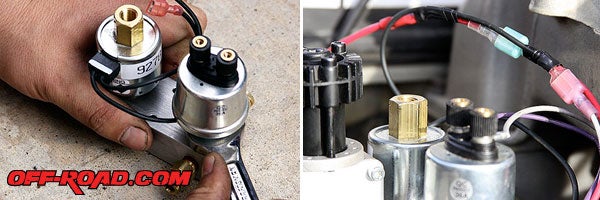
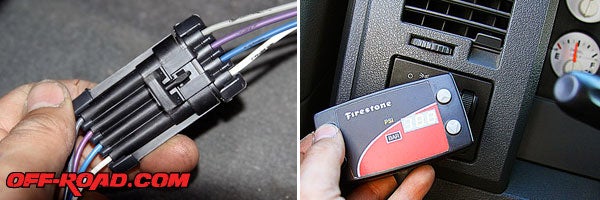

FINAL TOUGHTS
The Firestone Ride-Rite and Air-Rite addition has been well received by our Dodge Ram Mega Cab. It rides and handles much better when loaded now, and no more sagging.
When off-road they don’t get in the way with our current kit. With long-travel suspension, a different type of air springs can be used. Firestone has hundreds to choose from.

The installation of the Ride-Ride air helper springs was easy. All the parts are bolt-on and the instructions provided with the kit are easy enough for anyone with some tools and a desire to get under the truck to do it at home.
In our case, the custom bracket and installation of the compressor in the engine compartment is what took the longest. We could have used the provided bracket for frame installation, but we wanted to make sure our Firestone compressor has a long life away from rocks and the elements we sometimes face on and off-road.
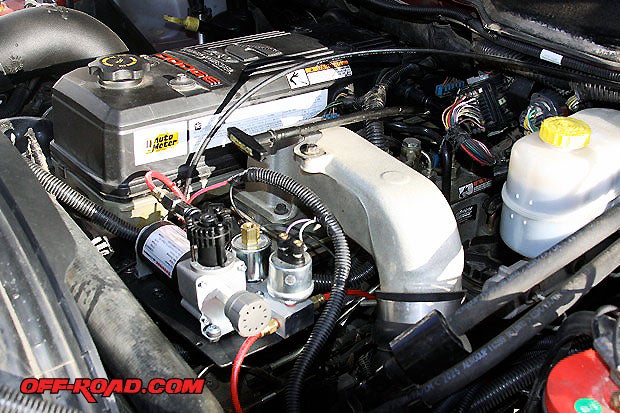
Overall, towing and hauling is much better. Having the on-board compressor and the ability to make adjustments from inside the cab is awesome. We can make adjustments on the fly and really fine-tune our tow/haul ride.
We’ll come back with a 1,000-mile review and give you some additional feedback on how the Firestone Ride-Ride system does.
So far, so good.
SOURCES:

Firestone Industrial Products
http://www.ride-rite.com/


 Your Privacy Choices
Your Privacy Choices